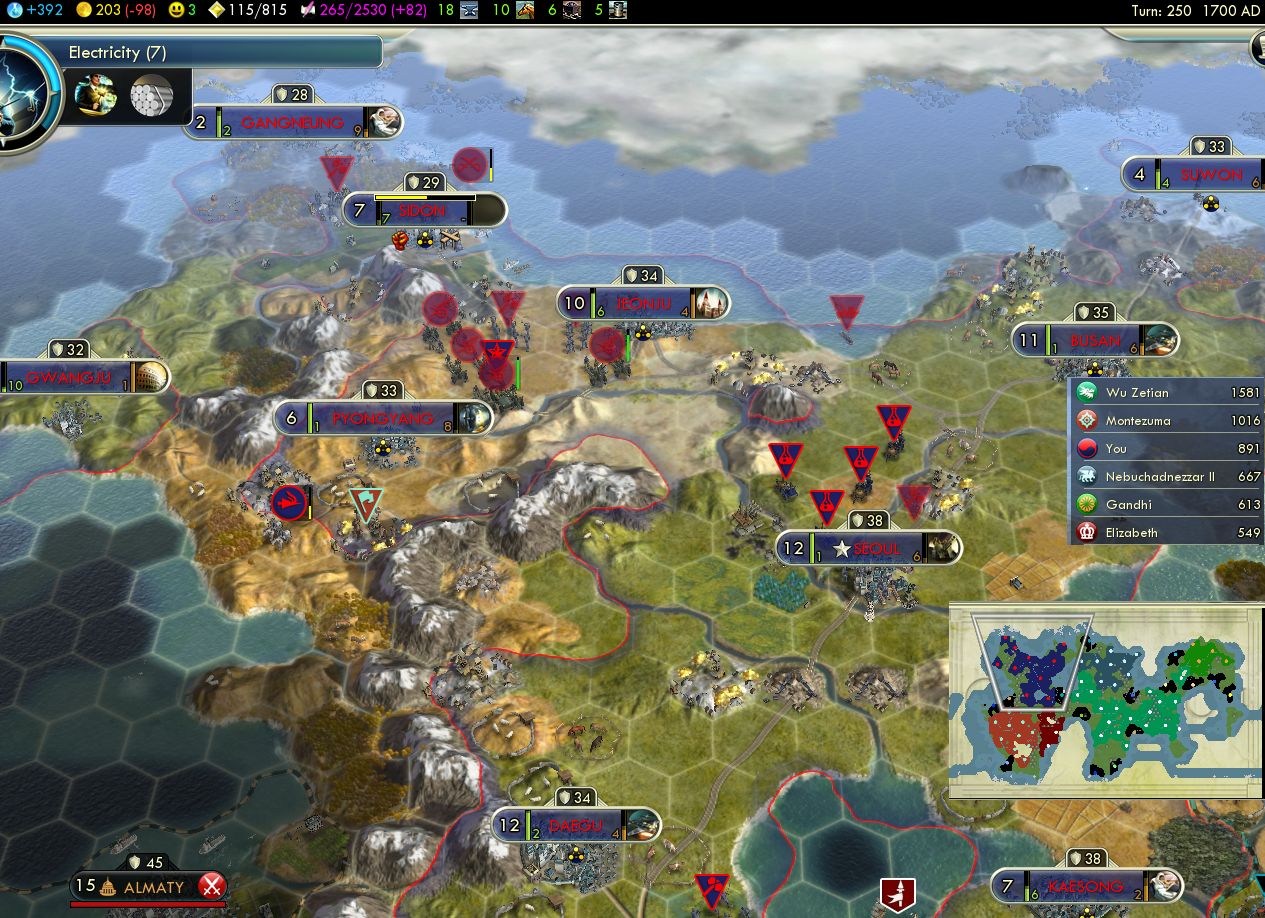And so with universities and workshops now arising, I could finally transition over to the specialist approach that was the plan. Each of the three cities had worked one unemployed citizen for a while which now became an engineer or 7-beaker scientist.
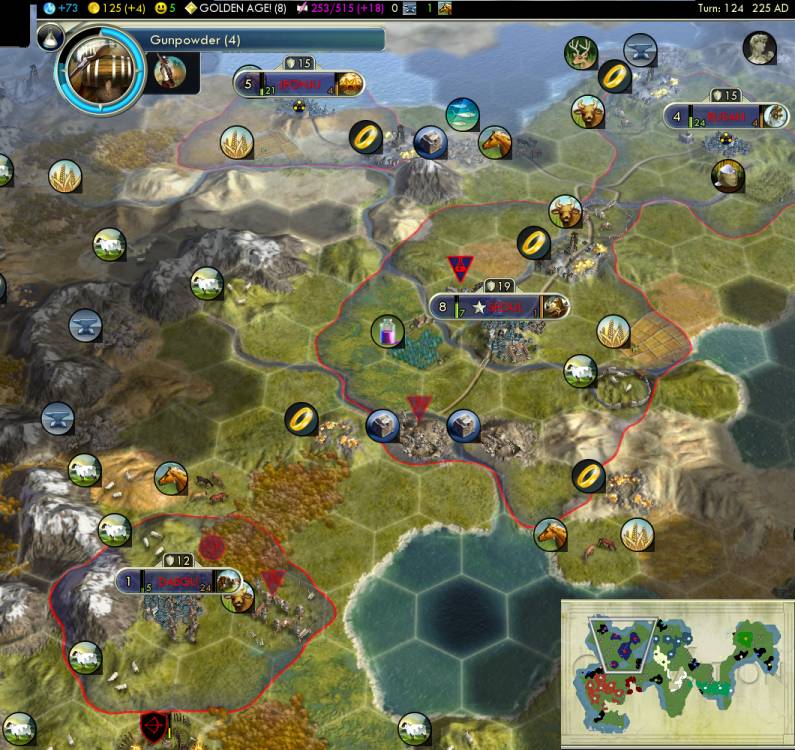
Some luxuries finally came available for trade, finally reaching the happiness Golden Age, and allowing me to expand to a fourth city. Just hadn't had the happiness to do this yet; the cities had built libraries and universities, not happy buildings. I'd deferred this spot since it had no new luxuries, but probably should have done it much sooner, ahead of one of the other existing cities. It would become crazy powerful with six pastured resources in the first two rings, at max productivity with a Stable and Fertilizer. A city this good can just build itself into happiness.
Up above you can see a Great Scientist, that Seoul had spawned the normal way from science wonder GPP (GL and PT). Was there enough of a long term here that an Academy is worthwhile? 8 science with 2 food from a tile, compared to a later game scientist specialist at 1 food (Civil Society), 1 hammer (Statue of Liberty), 7 science, and GPP. That's just about the same -- except that the Academy carries the opportunity cost of forfeiting a lightbulb. No dice, so this scientist saved for a bulb. (You pretty much must finish Freedom for GP tile improvements to be useful, which I wasn't going to do in this game.)
Seoul is building a Hwacha in the above overview, in order to finish it before Chemistry, since it's almost as effective but way cheaper than a cannon. I really wanted to have the one on hand, since I was running very thin on military, although militaristic Sidon had become friends for barb clears and an easy quest (find a natural wonder) so supplied me a couple horsemen. That Hwacha helped when Montezuma declared war, as was not unexpected. Seoul had to build a couple units, and the ensuing delay made me lose Notre Dame, but there was no danger from the Aztecs.
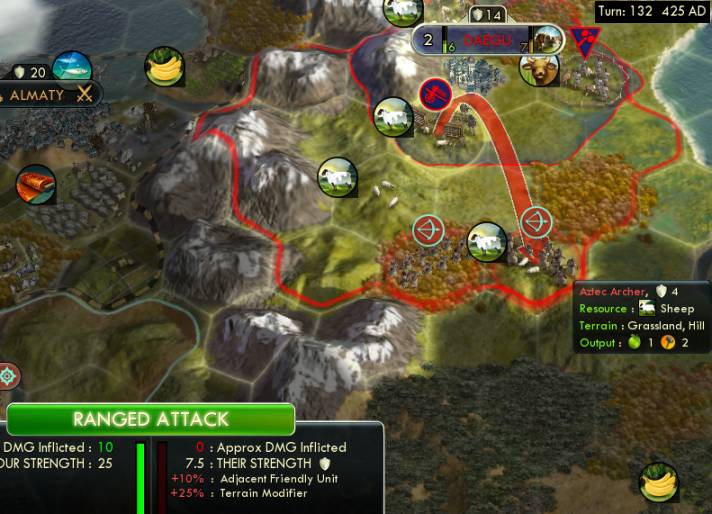
So I kept blasting through the tech tree. With Porcelain Tower and Rationalism, now Korea's boost ability and RAs were worth an entire tech each time. National College boosted Physics, a research agreement gave Steel, I researched Gunpowder normally, built Seoul's University to boost Chemistry, and another research agreement gave most of Fertilizer.
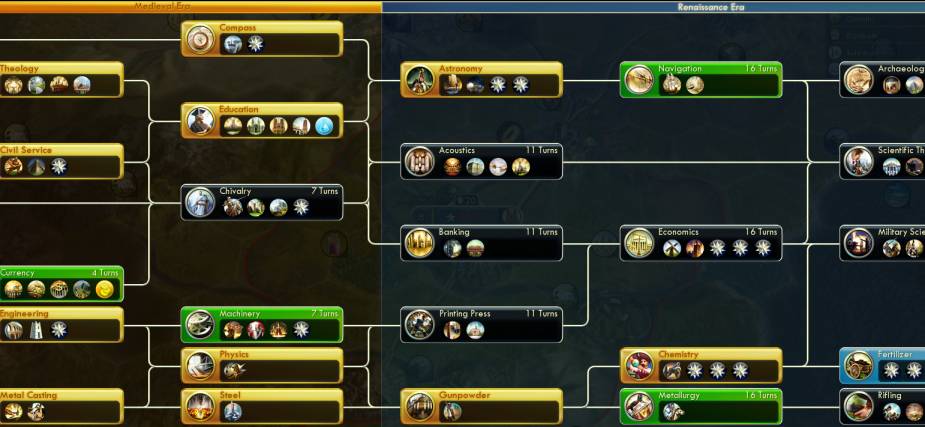
Chemistry and Fertilizer really seem to be the midgame beelines of choice, since they do their thing for free without needing any additional investment of hammers or other scarce inputs. And they are easily beelineable and bulbable, each needing only one prerequisite. And the line happens to include some decent military tech.
Notice how avoiding some low-end techs (Currency) can block lots of midrange techs (Chivalry and everything downstream from it), raising the median value if planned well (now the Navigation-Metallurgy column.)
My tech rate presently slowed down, though. Seoul had done all the buildings that gave Korea's science boost, and I found myself short of money for any more research agreements. In fact, my income crashed as low as -20 per turn for a while. I had to finally research Currency and build markets and run merchants just to avoid bankruptcy. Yeah, there's one serious problem with my variant: all those river tiles that I'm not working.
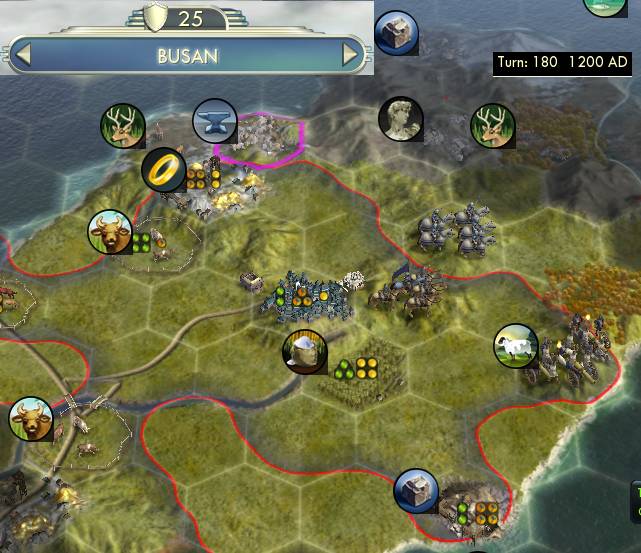
Another problem is that these cities take forever to expand out to all the third-ring resources. This city has been around for 150 turns and is only now getting to them. And it's STILL not anywhere close to that marble. This is even happening with the Tradition opener! I really like that policy, although it's proven impossible to find the actual mechanics of it defined anywhere. There's a value in the XML that says it gives -25 to the culture expansion exponent. But that doesn't help; the exponent is 1.10 and doesn't make sense to go below 1 (culture costs would decrease per each additional tile), so it doesn't make sense to subtract 25 or 0.25 or divide it by 1.25 or anything else I can think of. Anyway, the end effect is that the Tradition opener seems to cut culture expansion costs by somewhat more than half, and is well worthwhile for an approach with sparse cities.
I missed Notre Dame, but did get Taj Mahal, and that plus Circus Maximus gave me happy room to expand again. So timed right after I took a social policy, I put down three new cities. Each had about five resources in the first two rings, good enough.
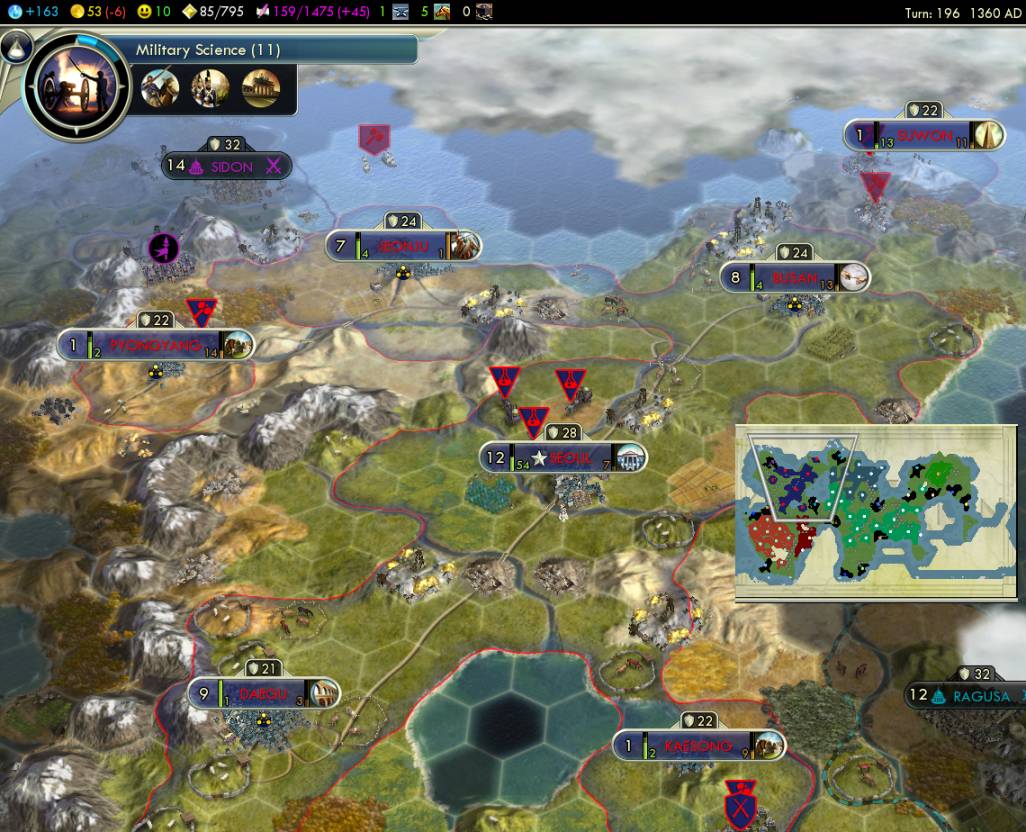
Along with border expansion trouble, the policies to max out the specialists were coming in too slowly. I belatedly realized I needed temples and even artist specialists to get that going - although then of course the temple maintenance and fired merchants meant more money trouble.
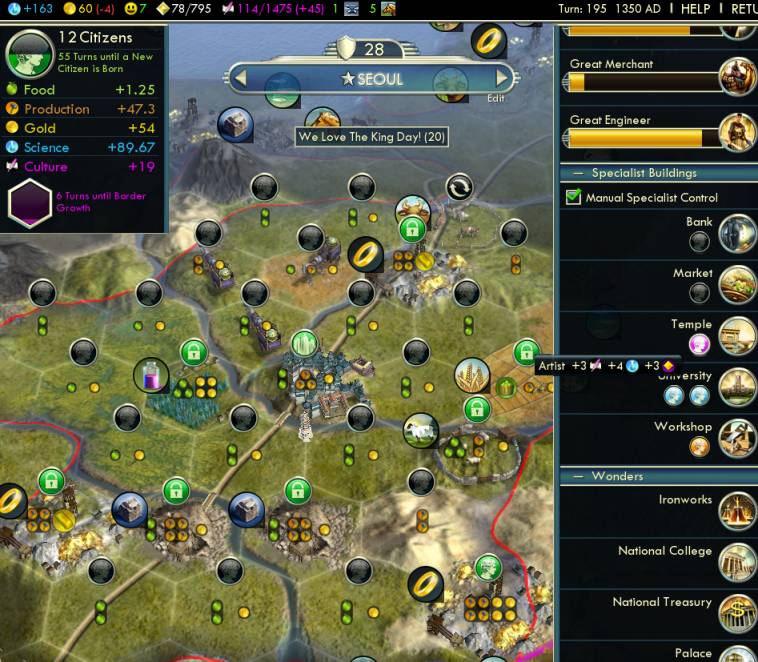
A number of times I had to choose between merchant and artist specialists. How can I quantify the value of these artists? Well, my empire-wide culture production is 45/turn. So every 15 artist-turns gets to the next social policy one turn sooner. The next policy was Civil Society, which would be worth about 15 food/turn overall. Is one food better than two gold? I think so, so I ran the artists. It's as if the artists were already worth the extra food.
I bulbed Steam Power and Replaceable Parts with saved scientists, spawning a Great Engineer to knock out most of the Statue of Liberty. On T219 1545 AD, the Democracy social policy finally hit, adding 10 happiness empire-wide thanks to all the specialists.

Here's something that I haven't seen before: a gold deficit that I can't fix. I had no trading posts, no merchants (scientists were better), few river tiles, small cities for little trade route income, and long railroads for maintenance costs. So what happens in bankruptcy in Civ 5? I got a warning that going worse than -5 GPT would cause units to disband, but that didn't happen. Looks like the deficit gets subtracted one-for-one from science. That's a reasonable penalty, except that it's actually correct to ignore it and keep running scientists instead of merchants, since 3 + 33% beakers is more than 2 + 25% cash. Silly game.
This deficit continued to soar, reaching over 100/turn in the later game! More units and roads and building maintenance (factories) kept arriving, with almost no gain in income. But it could just be ignored the entire way, with Korea's highly efficient scientists easily overpowering the deficit drain.
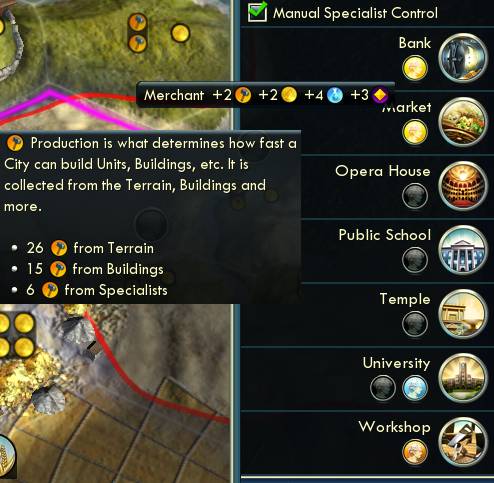
Another flaw: apparently the display mouseover for the Statue of Liberty is outright bugged and shows +2 production per specialist instead of 1. The other production box makes it clear, since those specialists add up to 6 hammers (one engineer plus four from SoL.) How does this kind of bug survive in a game after a year of patching? But I'm not going to rant and rave and throw out Civ 5 entirely over these small flaws, as some folks have done.
